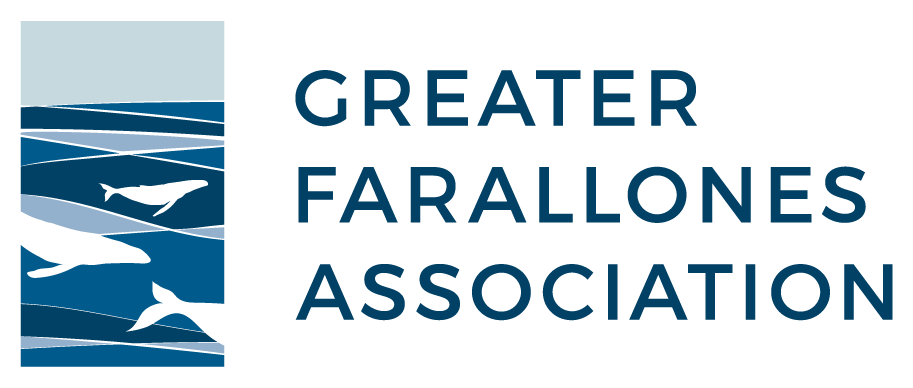Interview with a Long-time Beach Watcher

Blog by Natalie Moon, Greater Farallones Association Summer Intern, 2020
During my internship with Greater Farallones Association, I had the opportunity to learn about the Beach Watch program, which was established in 1993 after a series of oil spills underscored the need for reliable baseline data on seabirds and mammals. For over 25 years, highly-trained Beach Watch volunteers have monitored hundreds of miles of coastline along Greater Farallones National Marine Sanctuary, collecting information used to designate wildlife protection zones, to secure funds for habitat restoration, and inform important ocean management decisions.
One of the things I found most interesting about Beach Watch is the group of community scientists that keeps it going. Without dedicated long-term volunteers, this program would not be possible. To get a better understanding of what it’s like to be a Beach Watch volunteer, I interviewed Hollis Bewley, Association supporter and volunteer since 2014. Hollis’ assigned beaches are Salmon Creek and Miwok Beach.
What motivated you to begin volunteering with Beach Watch?
I’ve been walking beaches and exploring the intertidal for several years. It made sense to formally document and report observations in order to contribute to data that informs those responsible for managing and protecting our coastal resources.
What has been the most rewarding part of your experience as a Beach Watch volunteer?
Feeling like I’m making a contribution to something important. Someone said community science is observation with consequences, and it’s a wonderful feeling that observations you are making are contributing to a baseline dataset that could have an impact on resource management decisions. And the training is so impressive – if you’re one of those lifelong-learners, you’ll always be stimulated and engaged. There’s always something new to see and learn and staff and other volunteers always have time to share their knowledge. Staff have also done an amazing job of cultivating a sense of community among themselves and the volunteers, who are all curious people. The longevity and retention rate of Beach Watch volunteers is evidence of all these things.
Can you tell us about the most noteworthy things you’ve seen while surveying?
There’s always something new. One of the things that stands out most was a sub-adult male Steller sea lion that had washed up onto Stinson Beach shortly after I had completed my initial training. It was enormous and the face was bear-like. It was an amazing learning experience and I knew I was going to have many more.
Months of Beach Watch surveys were not possible this year due to the coronavirus pandemic. Have you missed your time in the field?
I’ve missed the continuity of seeing your beach and documenting its changes month after month. I have also missed the community of other Beach Watchers, though Association staff did a fabulous job of staying in touch and keeping us engaged.
Photo: Beach Watch volunteer Hollis Bewley. Credit: Beach Watch GFA/GFNMS

